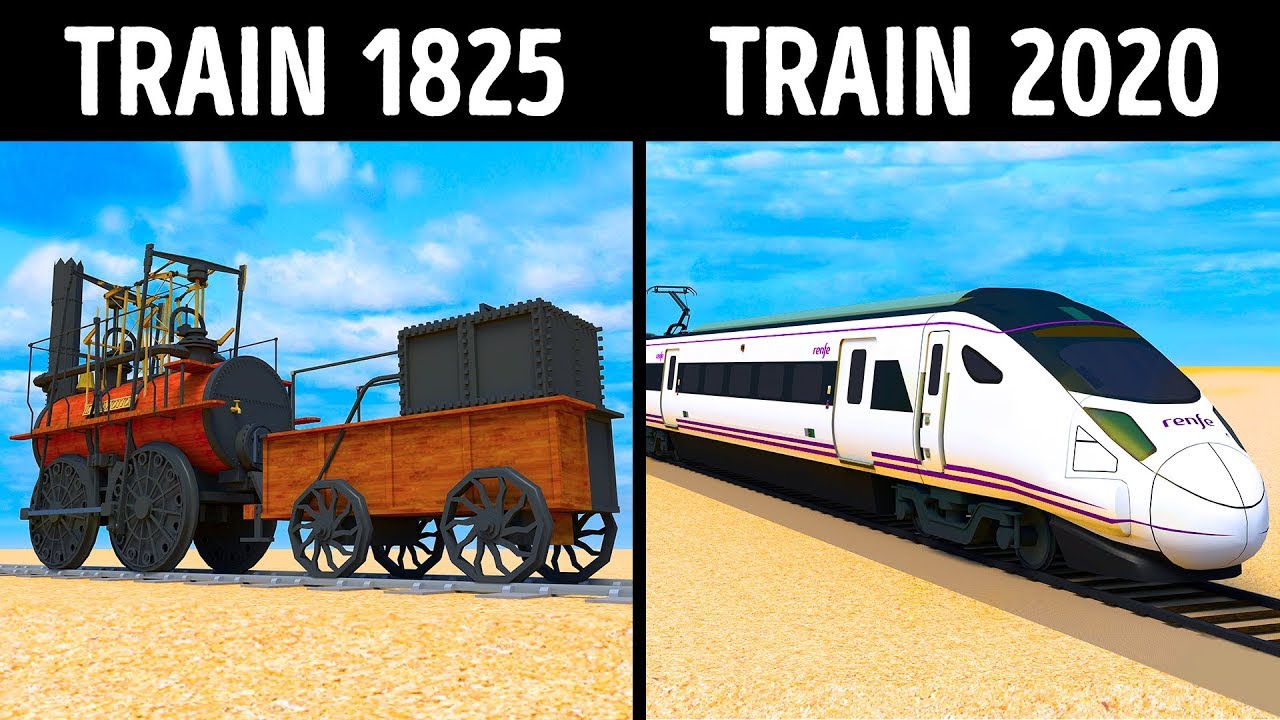Trains Have Changed Over 200 Years
How would old-school trains stand up against the ones we have today? You might be surprised: the grandpappies of locomotives have their own victories!
For example, in 1862, the Pullman company started producing luxury sleeper cars. The cars had upholstered seats, carpeting, and lacquered wood. Beds were concealed behind overhead panels and folded down like luggage compartments. The Pullman company even manufactured private luxury cars. Basically, hotel suites on wheels!
Other videos you might like:
A Train Lost in a Tunnel in Italy, No One Can Find It https://www.youtube.com/watch?v=d4m3HvTFG9Y&
What If You Dig a Tunnel Under the Ocean? https://www.youtube.com/watch?v=0PZ8KwlxhIk&
Titanic VS Modern Cruise Ships https://www.youtube.com/watch?v=a5ZwuzydnR8&
TIMESTAMPS:
The Locomotion No.1 0:25
The Flying Scotsman 0:55
Diesel trains 1:30
Electric trains 3:08
Maglev trains 4:34
The fastest train in the world 4:55
What the first train cars were like 6:08
#trains #travel #brightside
SUMMARY:
– Rail cars were used in some parts of England as far back as the early 1500s. They were mostly for carrying coal or unrefined metals out of mines or onto ships.
– Built almost a century after the Locomotion No.1, the engine car of the Flying Scotsman is nearly 80 ft long and weighs over 100 tons.
– Diesel trains date back to the late 1800s, but only really started to come into their own in the 1950s.
– Diesel trains are also much more efficient than their steam predecessors. Steam engines burn coal or wood to boil water.
– The excess steam also needed to be released when the train arrived, which meant so much built-up energy going to waste.
– In the 1930s, a typical steam train could spend as much as 65% of its time offline for maintenance.
– One of the fastest trains operating today is the SNCF TGV POS.
– Electric trains only need the motor that turns the wheels. Since they get all their power from the electrical grid, they also don’t need to worry about carrying the weight of fuel.
– Then there are maglev trains, which use magnets to hover (or levitate) above the tracks. Futuristic, fast, and quiet, they have all the benefits of conventional electric trains.
– As of 2019, the fastest train in the world is the SCMaglev, which can reach an incredible maximum speed of 375 mph.
– The problem is that maglev trains can’t run on regular tracks. An entirely new rail system must be built for them, and that comes with a hefty price tag.
– Modern train cars are still much safer and more comfortable than anything from the 19th century.
– The seats on modern passenger trains are similar to the ones on many airliners. The difference is that they don’t need seatbelts, and you’re free to get up and walk around whenever you feel like it.
Music by Epidemic Sound https://www.epidemicsound.com/
Subscribe to Bright Side : https://goo.gl/rQTJZz
—————————————————————————————-
Our Social Media:
Facebook: https://www.facebook.com/brightside/
Instagram: https://www.instagram.com/brightgram/
5-Minute Crafts Youtube: https://www.goo.gl/8JVmuC
Stock materials (photos, footages and other):
https://www.depositphotos.com
https://www.shutterstock.com
https://www.eastnews.ru
—————————————————————————————-
For more videos and articles visit:
http://www.brightside.me/



![[ID: Y7zyB7rsvHU] Youtube Automatic](https://okumasaati.net/wp-content/uploads/2020/10/id-y7zyb7rsvhu-youtube-automatic-360x203.jpg)
![[ID: oLSmGlBYgAk] Youtube Automatic](https://okumasaati.net/wp-content/uploads/2020/10/id-olsmglbygak-youtube-automatic-360x203.jpg)
![[ID: hI4NoVWq87M] Youtube Automatic](https://okumasaati.net/wp-content/uploads/2020/10/id-hi4novwq87m-youtube-automatic-360x203.jpg)
![[ID: 7L7OcbqhKYc] Youtube Automatic](https://okumasaati.net/wp-content/uploads/2020/10/id-7l7ocbqhkyc-youtube-automatic-360x203.jpg)
![[ID: vVTA-E3G8bQ] Youtube Automatic](https://okumasaati.net/wp-content/uploads/2020/10/id-vvta-e3g8bq-youtube-automatic-360x203.jpg)
![[ID: IP6TJXTEUwc] Youtube Automatic](https://okumasaati.net/wp-content/uploads/2020/10/id-ip6tjxteuwc-youtube-automatic-360x203.jpg)